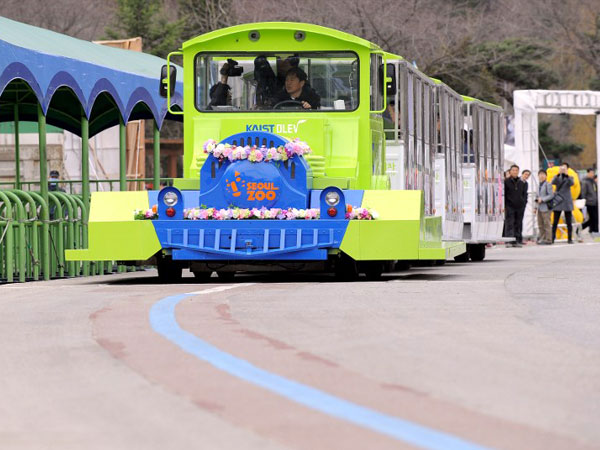South Korea tests ‘electric road’ for public buses

The Online Electric Vehicle (OLEV), towing three carriages, runs along a blue line under which power strips are buried for recharging, at an amusement park in Gwacheon, south of Seoul, on March 9, 2010. South Korean researchers launched an environmentally-friendly public transport system using a “recharging road” — with a vehicle sucking power magnetically from buried electric strips. AFP
GUMI—A South Korean city has begun testing an “electrified road” that allows electric public buses to recharge their batteries from buried cables as they travel.
The Korea Advanced Institute of Science and Technology (KAIST), which developed the system, said Thursday it would be tested over the next four months on a 24-kilometer (15-mile) route in the southern city of Gumi.
Pick-up equipment underneath the bus, or Online Electric Vehicle (OLEV), sucks up power through non-contact magnetic charging from strips buried under the road surface.
It then distributes the power either to drive the vehicle or for battery storage.
As a result it requires a battery only one-fifth the size of conventional electric vehicles.
The system also eliminates the need for overhead wires used to power conventional trams or trolley buses.
The technology does not come cheap, with each OLEV costing around 700 million won ($630,000).
“The technology is readily available but the question is how to bring down the cost,” said Park Jong-Han, manager of the company that produced the OLEV prototypes.
“Once the cost goes down, I believe more cities will be interested in commercializing the new transport network,” Park told Agence France-Presse.
The system has already been partially trialed on a much smaller scale at an amusement park and on the KAIST campus.
Electrifying the road does not require major construction work, as the recharging stations only have to be buried along 10-15 percent of the route at places such as bus stops.